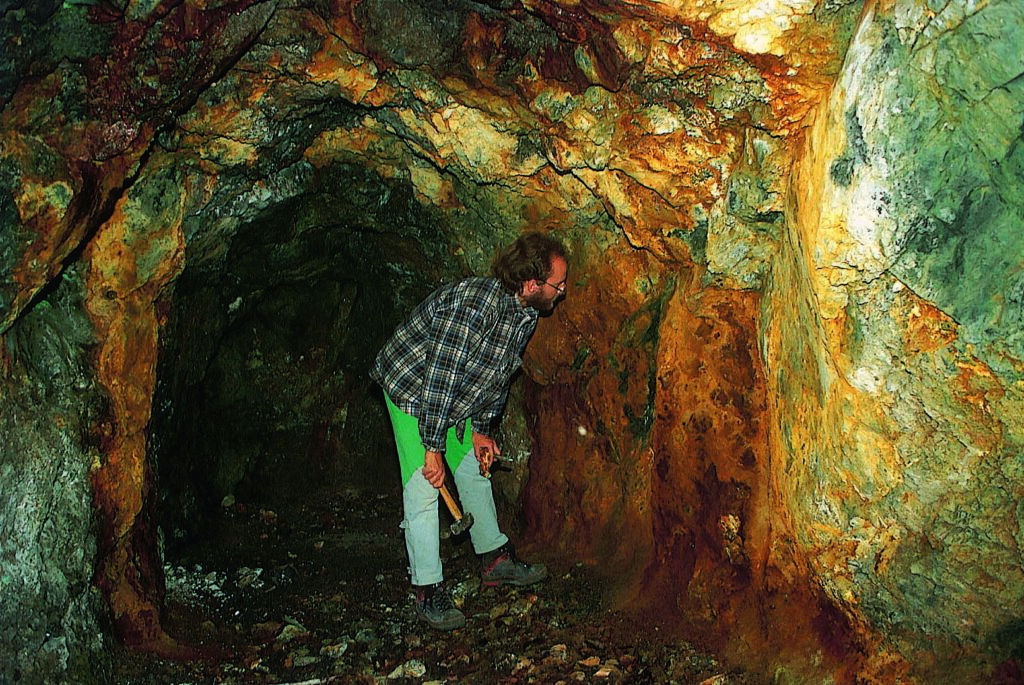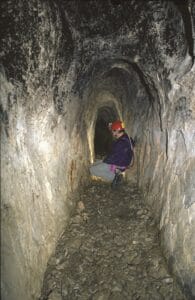EXTRACTION ACTIVITY: quarries and mines
The Italian legislation classifies the mining activity, according to the type of "cultivated” material, as:
1. Quarrying activity: when it concerns the removal of construction materials, for industry and ornamental stones of local importance;
2. Mining activity: when it concerns the removal of materials of high value and strategic importance such as metal ores and fuel.
In common parlance, mining is associated with an underground activity and quarrying as an open-cast activity; in reality nowadays, thanks to the availability of new technologies for excavating and supporting voids, environmental recovery interventions and a different sensitivity towards the landscape, quarrying is increasingly taking place underground.
EXTRACTION ACTIVITY in the Geopark area
The Geopark area has been exploited to obtain raw materials since ancient times, probably already during prehistoric times and in Roman times, but mining activities became significant in the Middle Ages.
The oldest written testimony relating to a mining exploitation concerns the mines of Monte Avanza (Forni Avoltri), when in 778 the Duke Franco Masselio donated a village called Forno with all its pertinences, including the mines of iron and copper. Other concessions followed in the thirteenth century in the area of the Canale di Gorto and in the area of Forni Avoltri. Considerable boost to mining research was given by the Venetian Republic which, in Carnia, procured minerals to supply the arsenal. Minerals were also sought to be used for minting.
Today all the mines are exhausted or closed because they are not very profitable, but important traces of this activity have remained in the area, which have become the object of research by many scholars. The toponyms (such as Rio Malinfier, Rio Miniere, Rio Pistons) and the legends also testify to a millenary mining activity.
On the other hand, several open-air quarries are still active for the extraction of limestone of great commercial value and chalk.
MINES AND MINING SITES IN THE GEOPARK AREA
In Carnia there are numerous areas where minerals or fuels were extracted in the past.
The extracted materials were mainly: galena (PbS), blende (or sphalerite) (ZnS), fluorite (CaF2), manganesiferous siderite ((Fe, Mn) CO3), siderite (FeCO3), tetrahedrite (Cu (Sb, AS) S3 ), hematite (Fe2O3) and barite (Ba-SO4). The mineralisations developed mainly in the Silurian and Devonian rocks. The mining activity, in addition to metal ores, also involved fuels such as coal (Monte Corona near Pramollo and Cludinico di Ovaro).
In most of the areas being exploited, only small and mostly superficial excavations and tunnels can be seen; however, there are sites where the activity has continued, albeit occasionally, for centuries and therefore in these places more important structures can be noticed even if rarely well preserved.
Monte Avanza (Forni Avoltri)
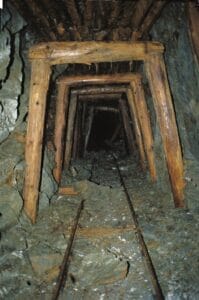
Timau (Paluzza)
The mining activity in the mountains around Timau, where silver and copper were extracted from the Paleozoic rocks, can be traced back to the late Middle Ages. The only remaining testimony of this mining activity is a tunnel in the area of the Pramosio Quarry where today the “Grigio Carnico” is extracted.
San Giorgio (Comeglians)
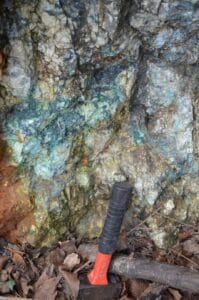
Val Aupa (Moggio Udinese)
Fluorite (a very common mineral composed of calcium fluoride) was extracted from the mineralisation of Val Aupa, present in Rio del Fous and Rio dell'Andri. There is no certain evidence of a mining activity, although probably occurring, prior to 1872; on the other hand there is a reliable and continuous documentation from 1925, when the low mines were abandoned and the works were concentrated at higher altitudes. Over time, periods of production and research have alternated with periods of complete inactivity.
Monte Cocco (Malborgetto-Valbruna)
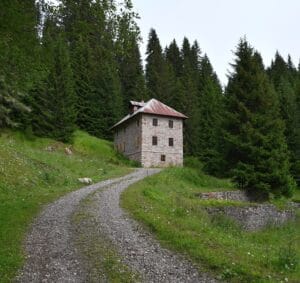
The end of the activity of these mines occurred in 1946 with the dismantling of all the plants. Only a brick building remained of the mining village. In the following years, new studies were conducted but with unsatisfactory results. Now many tunnels have collapsed, some can be entered with difficulty and danger because the beams are in poor condition and the debris is pressing on the infrastructures.
ACTIVE QUARRIES IN THE GEOPARK AREA
There are eight active quarries in the Carnic area; two in common of Forni Avoltri (Naguscel's Avanza and Clap), three in common of Paluzza (Pramosio, Valcollina-Portocozzi and Koul Troten), one in the municipalities of Paularo (Plan of Zermula), Verzegnis (Monte Lovinzola) e Ovary (Entrampo).
District of Forni Avoltri
Cava Avanza is characterized by the production of "Carnic peach blossom”, Commercially called, erroneously, marble; in fact it is not a metamorphic rock but a sedimentary rock dating back to 400 million years ago. It has a light gray-whitish color, with delicate pinkish-purple spots due to hematitic-manganese-bearing pigmentation. In the district is also mined the ”Gray Carnic, consisting of compact limestone, slightly metamorphosed, with a basic shade from gray to light gray with numerous light veins of calcite and dark carbonaceous material.
Paluzza district
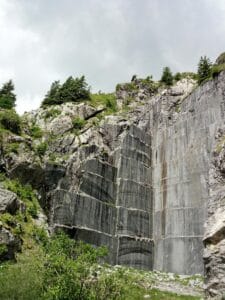
In the Koul Troten quarry, located in Laghetti di Timau, the "Onyx red", Consisting of a limestone belonging to the formation of" Pelagic limestone with climenias and goniatites ", therefore rich in ammonoids and dating back to the Upper Devonian - Lower Carboniferous. It owes its name to the presence of well-developed bands of reddish color alternating with bands of gray color, all crossed transversely by veins of white calcite. It is a material that differs from all other materials extracted in the region due to its chromatic characteristics.
View more Cava of Pian di Zermula (Paularo)
Also at the Cava Pian di Zermula the "Carnic gray ". In the area of the current quarry there was a previous mining activity which ended in the 60s, 70s of the last century. The authorization for the reactivation and environmental restoration of the old disused quarry dates back to 2015.
Cava Monte Lovinzola (Verzegnis)
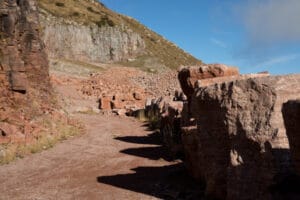
Entrampo Quarry (Ovaro)
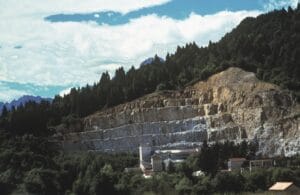
Geosites in the Carnic area related to mining sites
- Medieval silver mine of Pramosio (Paluzza): it is the only medieval mine tunnel still intact in its original form in the Eastern Alps.
- Cludinico coal mine (Ovaro): a Coal mine that remained active until 1957 and was recently recovered for cultural, educational and tourist purposes.
If you want to know more Geosites

